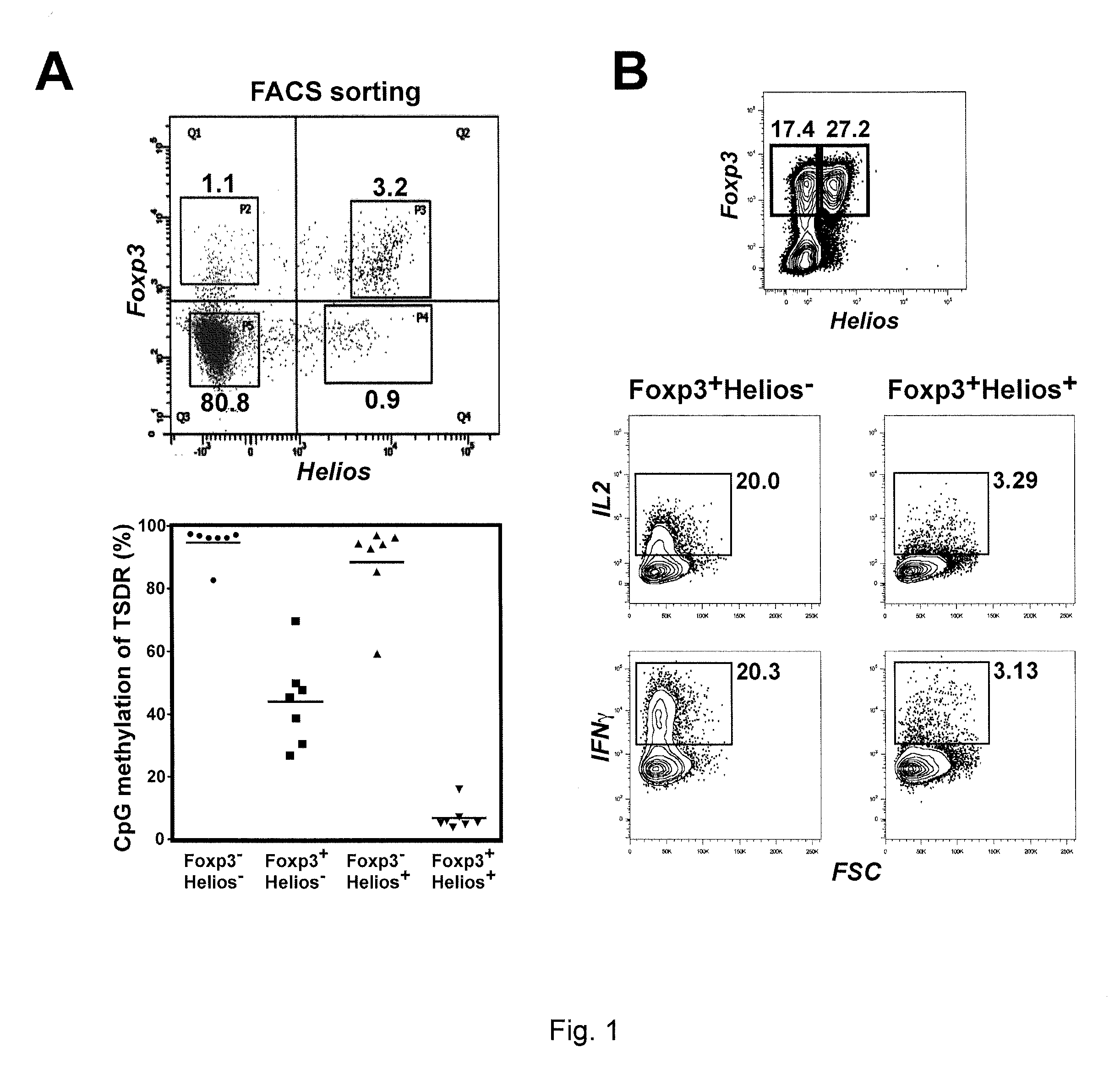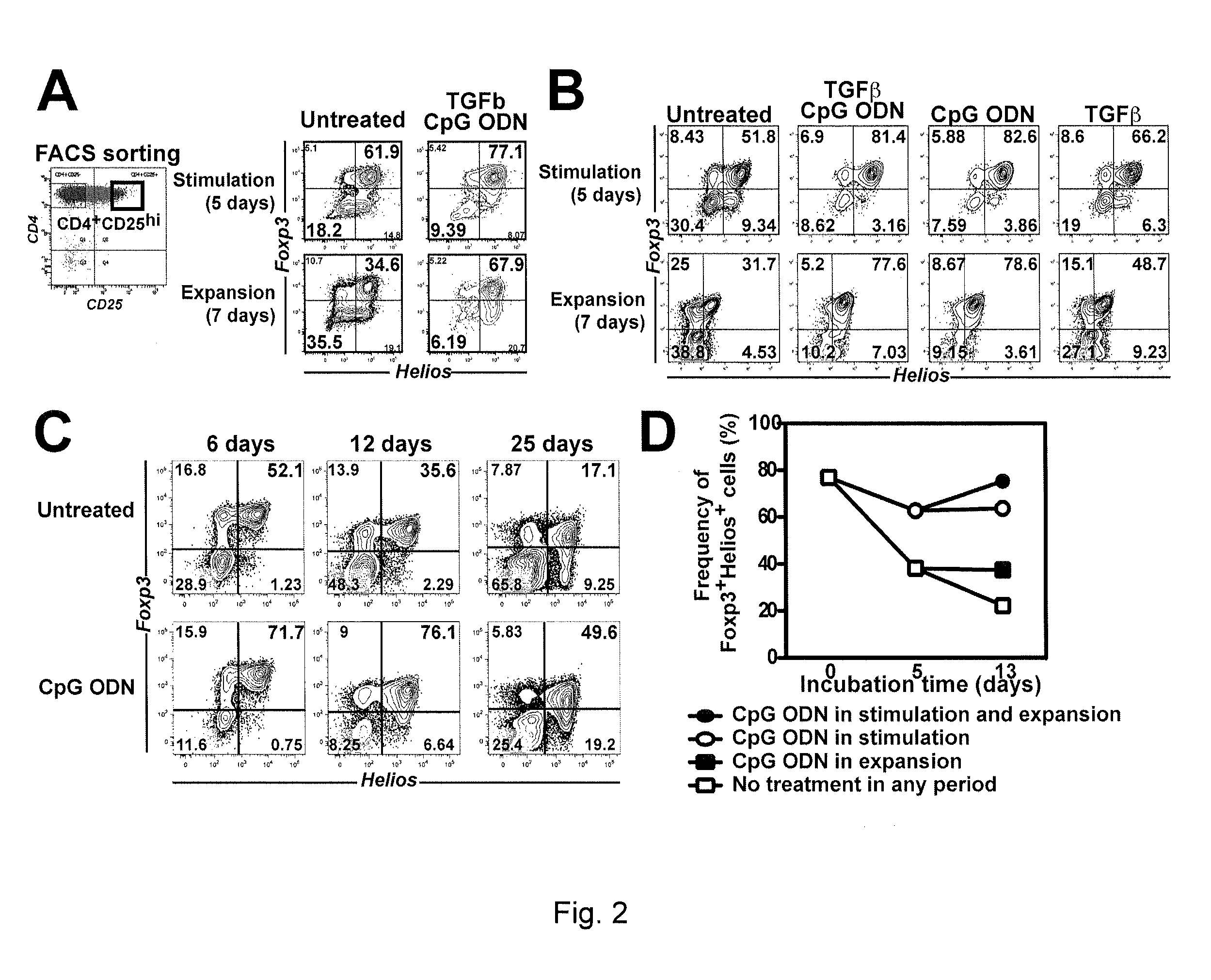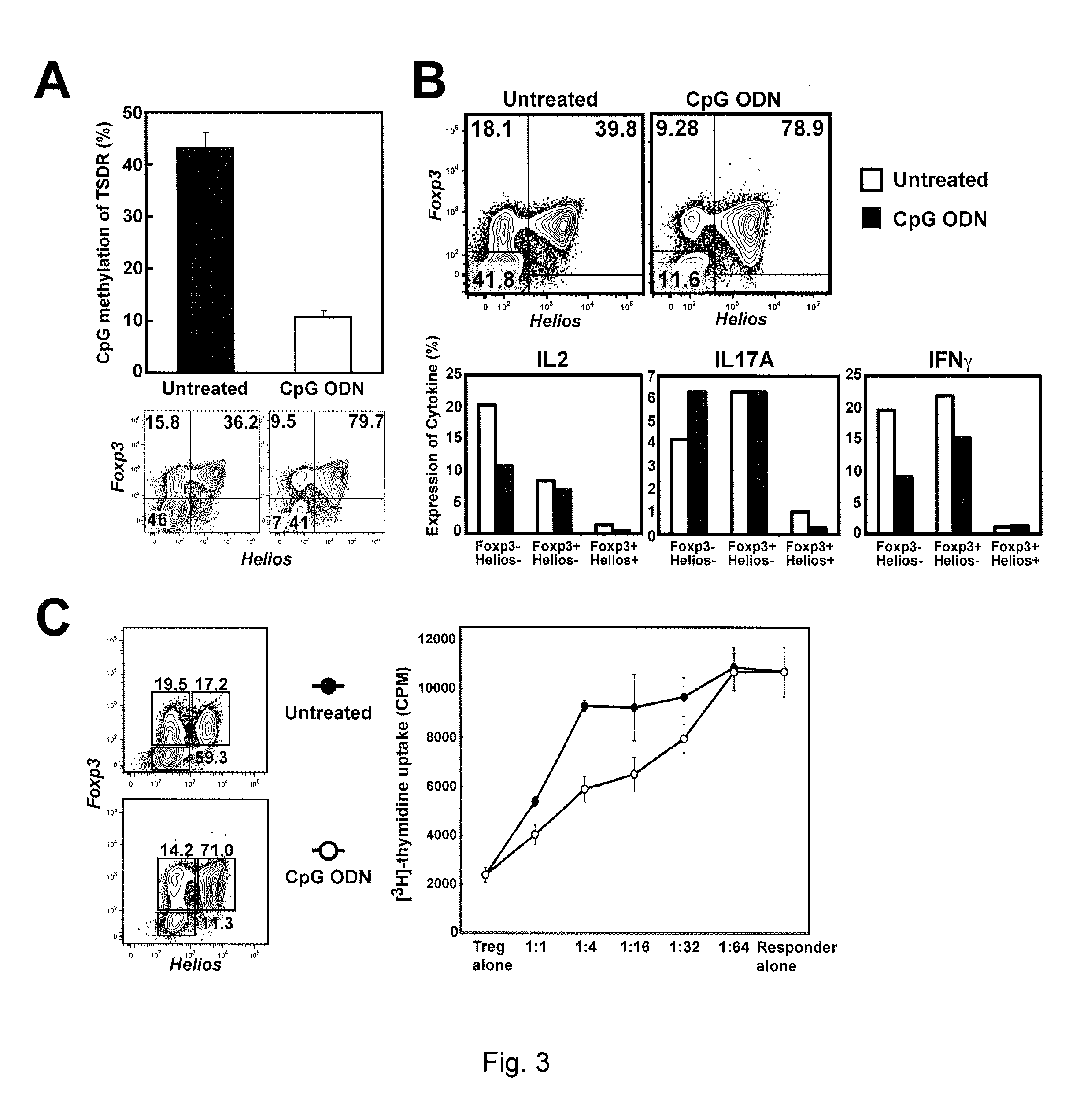Methods of producing t cell populations enriched for stable regulatory t-cells
a technology of stable regulatory t cells and compositions, applied in the field of compositions, can solve the problems of loss of foxp3 expression during the expansion process, and the inability to consider foxp3 as a completely reliable marker for functional human tregs
- Summary
- Abstract
- Description
- Claims
- Application Information
AI Technical Summary
Benefits of technology
Problems solved by technology
Method used
Image
Examples
example 1
[0071]The possibility that instability of Treg cell populations might be related to the different properties of the Helios+ and Helios− subpopulations, was explored. One epigenetic marker that has been used to distinguish nTreg from iTreg is the methylation status of the Treg specific demethylation region (TSDR) of the Foxp3 gene (Floess S, Freyer J, Siewert C, et al., PLoS Biol, 2007; 5(2):e38). Demethylation of the TSDR region correlates with the thymic origin of Foxp3+ T cells and stable expression of Foxp3, while T cells induced to express Foxp3 in vitro have a fully methylated TSDR region and lose expression of Foxp3 in vivo or in vitro.
[0072]To determine if a correlation exists between Helios expression and TSDR methylation status, four different CD4+ subsets (Foxp3+Helios+, Foxp3+Helios−, Foxp3−Helios+, and Foxp3− Helios−) were isolated and expression of various proteins analyzed. Briefly, human PBMCs were obtained from 20-80 year-old healthy male donors by Department of Tran...
example 2
[0075]Previous work had shown that a low percentage (1-5%) of freshly explanted Foxp3+ T cells produce effector cytokines (IL-2, IFNγ), and that almost all the cytokine producing cells were in the Foxp3+Helios− subpopulation (Liu H, Komai-Koma M, Xu D, Liew F Y, Proc Natl Acad Sci USA, 2006; 103(18):7048-7053). Thus, the ability of cell populations that were expanded using the presently disclosed methods was measured.
[0076]CD4+CD25+ T cells were isolated and sorted as described in Example 1, and expanded for 12 days by stimulation with plate-bound anti-CD3 and anti-CD28 in the presence of IL-2. While ˜90% (data not shown) of the starting population was Foxp3+, after 12 days of expansion only 45% of the cells remained Foxp3+ (FIG. 1B). Upon re-stimulation in vitro with phorbol myristate acetate (PMA) / ionomyin, 20% of the expanded Foxp3+Helios− subpopulation produced IL-2 or IFNγ, while the frequency of cytokine producers remained low in the Foxp3+Helios+ subpopulation (FIG. 1B). Thes...
example 3
[0077]This Example demonstrates that addition of CpG ODN to cell cultures results in enhanced maintenance of Foxp3+Helios+ cells during in vitro expansion.
[0078]Initially, two potential candidates were selected for testing: TGFβ, and the toll-like receptor 9 (TLR9) agonist CpG oligodeoxynucleotide (ODN). CD4+CD25+ cells, sorted as described in Example 1, were stimulated with plate-bound anti-CD3 and anti-CD28 in the presence of TGFβ (5 ng / ml) or CpG ODN (ODN2395, 2.5 μM) for 5 days. The cells were then washed and incubated for two additional days in IL-2 containing media. Foxp3 and Helios staining was performed on gated viable CD4+ cells. The results of this analysis, which are shown in FIG. 2, show that the frequency of the Foxp3+Helios+ positive cells was higher in cells expanded in the presence of TGFβ and the ODN as compared to cells expanded in the absence of TGFβ and the ODN (FIG. 2A). The 5 day expanded cells were then washed, and re-stimulated for an additional 7 days in the...
PUM
| Property | Measurement | Unit |
|---|---|---|
| time | aaaaa | aaaaa |
| length | aaaaa | aaaaa |
| purity | aaaaa | aaaaa |
Abstract
Description
Claims
Application Information
 Login to View More
Login to View More - R&D
- Intellectual Property
- Life Sciences
- Materials
- Tech Scout
- Unparalleled Data Quality
- Higher Quality Content
- 60% Fewer Hallucinations
Browse by: Latest US Patents, China's latest patents, Technical Efficacy Thesaurus, Application Domain, Technology Topic, Popular Technical Reports.
© 2025 PatSnap. All rights reserved.Legal|Privacy policy|Modern Slavery Act Transparency Statement|Sitemap|About US| Contact US: help@patsnap.com



